Lviv National Art Gallery
Borys Voznytsky Lviv National Art Gallery (previously - Lwów Art Gallery, Polish: Lwowska Galeria Sztuki), a leading art museum in Ukraine, has over 60,000 artworks in its collection, including works of Polish, Italian, French, German, Dutch and Flemish, Spanish, Austrian and other European artists.[1] The gallery is "successor" to a Polish institution, Lwowska Galeria Sztuki, founded in 1907 as the city's municipal museum. The Provenance of its current stock comes from a multiplicity of largely Polish sources, including the early purchase by the then city magistrature of the private collection of Jan Jakowicz. The collection was subsequently expanded through donations of parts of the Władysław Łoziński (1914) and Bolesław Orzechowicz (1929) collections. In 1940, after the city of Lviv/Lwów had been occupied by the Soviet Union, the Soviet government ordered the seizure of private property. As a result, works from the Lubomirski Museum, integrated with the Ossolineum since 1823, the Borowski Library and several other private collections, are currently in the possession of the gallery. All these works were, until the 1939 Invasion of Poland and subsequent state appropriation, the property of the Polish state, private Polish collectors, and of the Polish Roman Catholic church and, arguably, remain such.
Львівська Національна Галерея Мистецтв імені Бориса Возницького | |

| |
| Former name | Lwowska Galeria Sztuki |
|---|---|
| Established | 1897 |
| Location | 3 Stefanyka street Lviv, Ukraine |
| Type | Art museum |
| Director | Taras Voznyak |
| Website | lvivgallery |
In early 2005 the Lubomirski collection of 14th - 18th century European art was transferred to its new premises - the renovated Palace of Count Potocki, a former governor of Austrian Galicia. A masterpiece by the 17th-century French artist, Georges de La Tour, is on permanent display.
Timeline
- 1897 - the city magistrature decides to open an art gallery
- 1902 – the first paintings are purchased including by: Jan Styka, Jan Matejko, Wilhelm Leopolski, Feliks Wygrzywalski, Jacek Malczewski and Edward Okuń
- 1907 – the collection of Jan Jakwicz is purchased. It includes 400 paintings by Raphael, Rembrandt, Rubens, Van Dyke, Velasquez, Ribeiry, Watteau and others,
- On 14 February 1907 – the gallery opens. Its first curator is the Polish painter Marceli Harasimowicz, who served until 1931.
- 1914 – the gallery moves to a palace purchased from historian and writer Władysław Łoziński
- 1919 – Bolesław Orzechowicz donates his collection to the city. It includes paintings by Matejko, Juliusz Kossak, and Artur Grottger. At the time, the gallery is divided into three departments: Polish art, Western European art, and the Racławice Panorama
- 1938 – Leon Piniński and Konstanty Brunicki donate their collections to the gallery,
- 1939 - fearing the oncoming war, the local Polish aristocracy deposits their collections with the gallery,
- 1940 - Soviet occupying authorities seize the gallery. The Soviet authorities decide to close several other institutions, including the Ossolineum, Baworowski Library, the Historical Museum, the Lubomirski Museum and private collections of the Dzieduszycki, Gołuchowski and Sapieha families. The gallery is placed under the administion of the Ukrainian Academy of Arts. Several Polish works are destroyed, the rest of the collections has not been restituted to Poland, and so remain in Lviv.
Divisions
- Lozinski Palace, the main building, on 3 Stefanyka street
- Potocki Palace, 15 Kopernyka street
- Boim Chapel, 1 Katedralna Square
- Museum of Ancient Ukrainian Books, 15a Kopernyka street, near Potocki Palace
- Rusalka Dnistrova Museum, 40 Kopernyka street
- Church of St. John the Baptist, 1 Pidhirna street
- Johann Georg Pinsel Museum, 2 Mytna street
- Memorial Museum-workshop of Teodozia Bryzh, 5 Martovycha street
- Mykhailo Dzyndra Museum of Modern Sculpture, 16 Muzeyna street, Briukhovychi
- Olesko Castle, in Olesko
- Pidhirtsi Castle, in Pidhirtsi
- Markiyan Shashkevych Memorial Museum in Pidlyssia, Zolochiv Raion.
- Zolochiv Castle Memorial Museum, in Zolochiv
- Hetman Ivan Vyhovsky Museum, in Ruda, Zhydachiv Raion.
- Pyatychanska Tower, in Pyatychany, Zhydachiv Raion
- Museum of Zhydachiv Land, in Zhydachiv.
Dutch and Flemish Art Collection
There are over 150 paintings of the Flemish and Dutch schools in the gallery’s collections. Among the jewels of the collection are two still lives by Jan van Kessel and Still life with flowers by Abraham Brueghel, grandson of Jan Brueghel I. Also on display are paintings by others of the Brueghel School, for example, a painting by Joseph van Bredael in the style of his famed predecessor at the beginning of the 18th century. Pieter Neefs I an associate of Frans Franken, known for small figure compositions and church interiors. There are two portraits by Gerrit van Honthorst, Man with viola da gamba and Woman with a guitar (1631).
The Lviv Art Gallery collection also has Saint Jerome by Lucas Gassel (1539), Portrait of a woman by Pieter Pietersz (1557), a group of paintings by Jakob de Backer, Venice, Bellona and Mary Magdalene and, two landscapes by Abraham Cowarts. There are also paintings from the Dutch Golden Age painting, for instance, The Storm by Pieter van der Croos and a still life by Jan Jansz van de Velde, A glass of wine and fruits (1639). The Lviv Art Gallery also possesses two battle scenes by the Flemish Pauwels Casteels an artist who is a rarity in museums.
Gallery
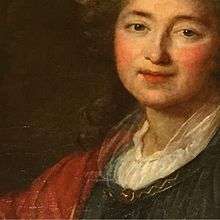
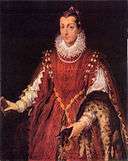 Sofonisba Anguissola. Portrait of a young patrician
Sofonisba Anguissola. Portrait of a young patrician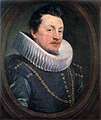 Peter Paul Rubens. Portrait of a Man
Peter Paul Rubens. Portrait of a Man Marcello Bacciarelli. Portrait of Stanisław August Poniatowski
Marcello Bacciarelli. Portrait of Stanisław August Poniatowski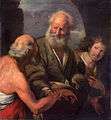 Bernardo Strozzi. St. Peter Cures the Lame Beggar
Bernardo Strozzi. St. Peter Cures the Lame Beggar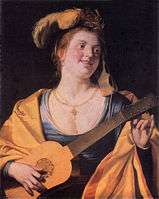 Gerard van Honthorst. Woman with guitar
Gerard van Honthorst. Woman with guitar Anton Graff. Portrait of Konstancja Rzewuska
Anton Graff. Portrait of Konstancja Rzewuska
Polish art
- Battle of Klushino, Szymon Boguszowicz
 Adoration of the Magi, Szymon Czechowicz
Adoration of the Magi, Szymon Czechowicz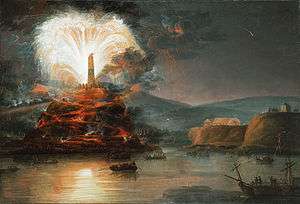 Fireworks in honour of Catherine II, Jan Bogumił Plersch
Fireworks in honour of Catherine II, Jan Bogumił Plersch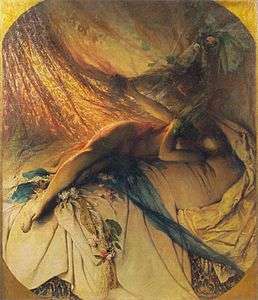 Bacchante, Witold Pruszkowski
Bacchante, Witold Pruszkowski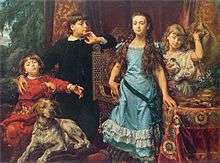 Portrait of the artist's four children, Jan Matejko
Portrait of the artist's four children, Jan Matejko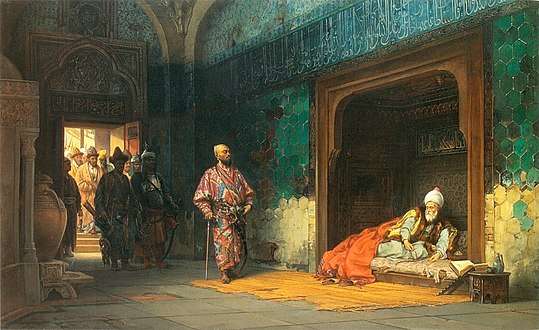 Sultan Bayezid prisoned by Timur, Stanisław Chlebowski
Sultan Bayezid prisoned by Timur, Stanisław Chlebowski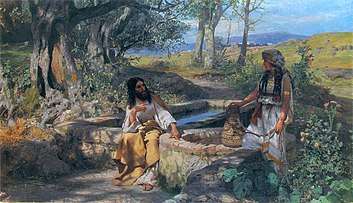 Christ and Samaritan woman, Henryk Siemiradzki
Christ and Samaritan woman, Henryk Siemiradzki Nubian man, Franciszek Żmurko
Nubian man, Franciszek Żmurko Władysław the Elbow-high near Ojców, Wojciech Gerson
Władysław the Elbow-high near Ojców, Wojciech Gerson Snow, Julian Fałat
Snow, Julian Fałat.jpg) Moonlight night, Józef Chełmoński
Moonlight night, Józef Chełmoński Santa Maria della Salute, Jan Stanisławski
Santa Maria della Salute, Jan Stanisławski Eloe, Jacek Malczewski
Eloe, Jacek Malczewski Landscape from Meaux, Zygmunt Waliszewski
Landscape from Meaux, Zygmunt Waliszewski
References
- "Ukraine's Finest Art Museum". lvivalive. Archived from the original on 29 June 2016. Retrieved 26 July 2013.
- Courant 12 (PDF)
| Wikimedia Commons has media related to Lviv Art Gallery. |